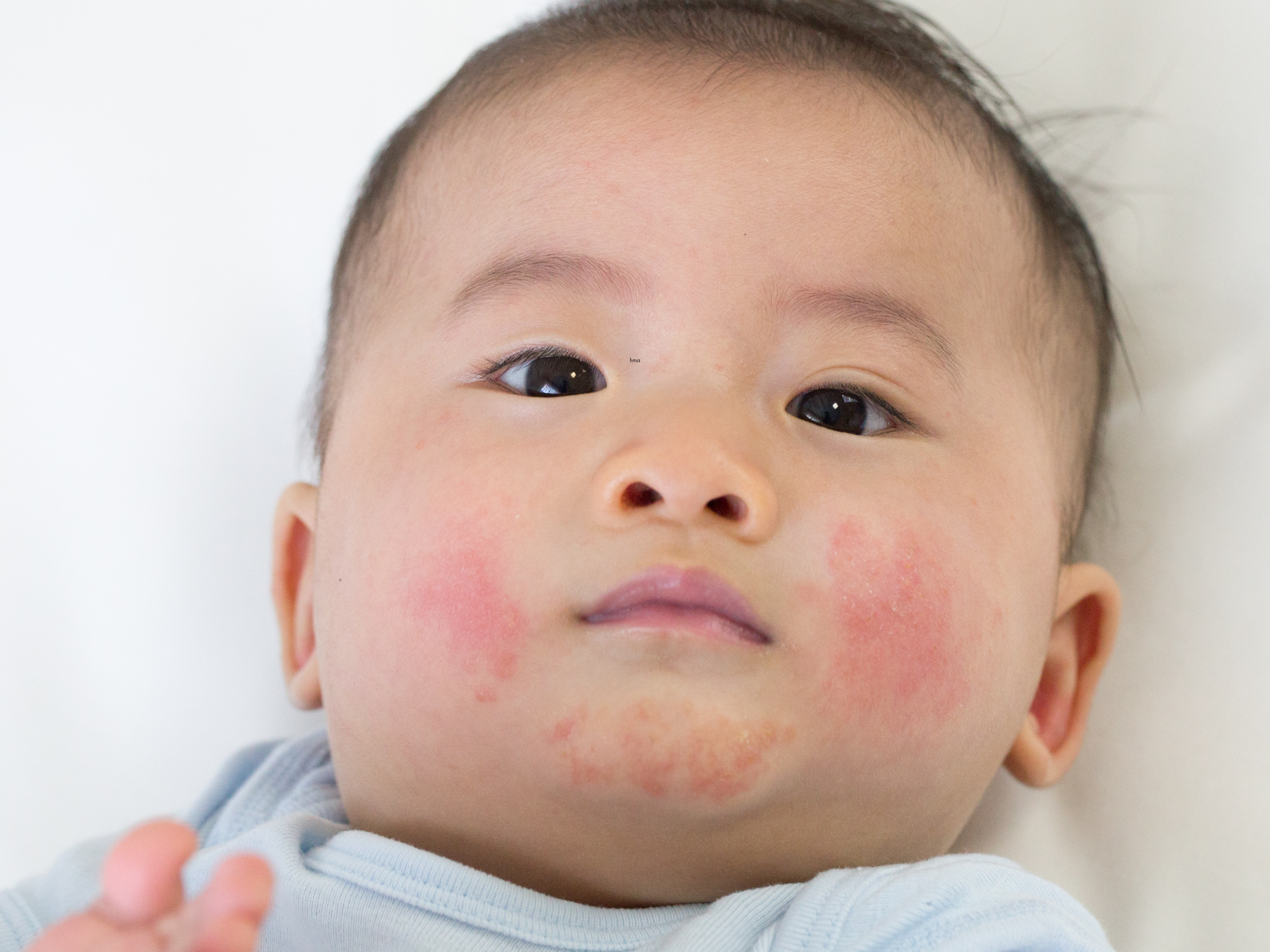
Hives (Urticaria)
Urticaria, or hives, is a skin condition that affects an estimated 25% of the population at some time in their lives. The urticarial rash consists of read, itchy and usually raised areas that can occur anywhere on the body. The center raised portion is often paler compared to the surrounding redness. Individual lesions usually last less than 24 hours and blanch (lose their red color) when pressed. Urticaria are considered acute if the episode lasts less than 6 weeks, and episodes lasting longer than 6 weeks are considered chronic.
Angioedema, which is the same process as hives but affecting the deeper tissues, may occur along with the urticaria. Those with angioedema experience swelling, usually affecting the lips, eyelids, and sometimes the tongue or throat. Most cases of hives and angioedema are the result of the release of a chemical called histamine. Histamine is stored inside mast cells, and when these cells are activated, they release histamine and other chemical which leads to the rash and swelling.
Acute outbreaks of urticaria are often due to an identifiable agent, such as an allergy to a specific food, medication, insect sting or latex. In addition, viral infections are common causes of acute urticaria. A thorough history and physical examination, as well as allergy testing when appropriate may help determine the causative agent.
Chronic urticaria is generally not due to an allergic trigger, and allergy skin testing, except in certain cases, is not necessary or helpful. Chronic urticaria may be due to physical causes, such as cold exposure, exercise or persistent pressure to the skin. Dermographism, which means writing on the skin, is sometimes seen. Those with dermographism develop a raised, linear rash where scratched. About 50% of those with chronic urticaria have an antibody in their blood which causes the mast cells in the skin to release histamine. While infrequent, chronic urticaria may occur in conjunction with other autoimmune diseases or vasculitis. Up to 30% may have associated thyroid antibodies. A thorough history and physical examination is necessary, and your allergist may order a blood test and x-ray to rule out other underlying diseases. In addition, your doctor may request that you have a skin biopsy of the urticarial lesion to further help with diagnosis.
Most acute urticarial episodes resolve with minimal treatment. Whenever there is an identifiable trigger, that substance should be avoided. Those with physical urticaria need to avoid their triggers as well. Approximately 50% of patients with chronic urticaria will remit in 2 years, 65% in 3 years, 85% in 5 years, and nearly all will remit within 10 years. In most instances, urticaria will improve with antihistamines. Sometimes, a combination of two or more different antihistamines are used. For those with severe or persistent symptoms, your doctor may also prescribe corticosteroids. Those that experience internal symptoms of angioedema should also have an emergency epinephrine autoinjector. Your physician will work closely with you to find the treatment that works best for you.
Diplomates of the American Board of Allergy and Clinical Immunology
